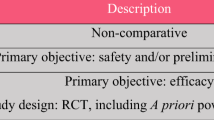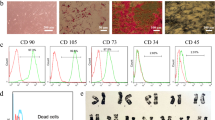Abstract
Purpose
The debate on the effects and outcome of olfactory ensheathing cell (OEC) transplantation for the treatment of spinal cord injury (SCI) has remained unresolved for nearly 20 years. This study aimed to evaluate the safety and efficacy of OEC transplantation in chronic SCI patients.
Method
Electronic databases, including PubMed, the Cochrane Library, EMBASE, and MEDLINE, were searched to identify clinical therapeutic trials studying the use of OEC transplantation for SCI in humans. Each trial was analyzed in accordance with the criteria of the Cochrane Handbook 5.1.0 and MOOSE. Data were analyzed with Review Manager 5.2 and Meta-Analyst Beta 3.13 software.
Results
Eleven articles concerning 10 studies of 1,193 patients with chronic SCI treated with OEC transplantation were selected for review. All the articles had low methodological quality. Studies reported their outcomes using the American Spinal Injury Association (ASIA) Impairment Scale; the AISA motor, light touch, pinprick score; the Functional Independence Measure and (or) other measure methods. According to the available relevant data, the incidences of total adverse events and mortality were 7.68 % (n = 742) and 0.35 % (n = 566), respectively. The most frequently reported adverse events were fever, mild anemia, and syringomyelia; however, the statistical adverse events occurring in different studies were cerebrospinal fluid leakage (7.00 %, n = 586, 2 trials), sensory deterioration (0.70 %, n = 573, 2 trials), and both motor and sensory deterioration (0.68 %, n = 586, 2 trials).
Conclusions
Given the results from our study, we conclude that OEC transplantation appears to be safe, although the evidence for efficacy is modest and requires the support of prospective, randomized trials in larger cohorts of patients. Further randomized controlled trials utilizing strict therapy programs and implanted cell selections are needed to confirm these findings.





Similar content being viewed by others
Abbreviations
- SCI:
-
Spinal cord injury
- OECs:
-
Olfactory ensheathing cells
- LP:
-
Lamina propria
- OM:
-
Olfactory mucosa
- OB:
-
Olfactory bulb
- ASIA:
-
American Spinal Injury Association
- MOOSE:
-
Meta-analysis of Observational Studies in Epidemiology
- AIS:
-
American Spinal Injury Association (ASIA) Impairment Scale
- FIM:
-
Functional independence measure
- PVSEP:
-
Paravertebral sensory evoked potential
- IANR-SCIFRS:
-
International Association of Neurorestoratology Spinal Cord Injury Functional Rating Scale
- MRI:
-
Magnetic resonance imaging
- EMG:
-
Electromyography
- MAS:
-
Modified Ashworth Scale
- SSEP:
-
Somatosensory evoked potentials
- TMS:
-
Transcranial magnetic stimulation
- WISCI:
-
Walking Index for Spinal Cord Injury
- ISNCSCI:
-
International Standards for Neurological Classification of Spinal Cord Injury
References
Thuret S, Moon LDF, Gage FH (2006) Therapeutic interventions after spinal cord injury. Nat Rev Neurosci 7(8):628–643
van Praag H et al (2002) Functional neurogenesis in the adult hippocampus. Nature 415(6875):1030–1034
Zigova T, Graziadei PP, Monti-Graziadei AG (1990) Olfactory bulb transplantation into the olfactory bulb of neonatal rats. Brain Res 513(2):315–319
Zigova T, Graziadei PP, Monti-Graziadei AG (1992) Olfactory bulb transplantation into the olfactory bulb of neonatal rats: a WGA-HRP study. Brain Res 588(1):6–12
Ramon-Cueto A et al (2000) Functional recovery of paraplegic rats and motor axon regeneration in their spinal cords by olfactory ensheathing glia. Neuron 25(2):425–435
Imaizumi T et al (2000) Xenotransplantation of transgenic pig olfactory ensheathing cells promotes axonal regeneration in rat spinal cord. Nat Biotechnol 18(9):949–953
Li Y, Field PM, Raisman G (1997) Repair of adult rat corticospinal tract by transplants of olfactory ensheathing cells. Science 277(5334):2000–2002
Franklin RJ et al (1996) Schwann cell-like myelination following transplantation of an olfactory bulb-ensheathing cell line into areas of demyelination in the adult CNS. Glia 17(3):217–224
Ramon-Cueto A, Nieto-Sampedro M (1994) Regeneration into the spinal cord of transected dorsal root axons is promoted by ensheathing glia transplants. Exp Neurol 127(2):232–244
Lu J et al (2002) Olfactory ensheathing cells promote locomotor recovery after delayed transplantation into transected spinal cord. Brain 125(Pt 1):14–21
Cowan CM, Roskams AJ (2002) Apoptosis in the mature and developing olfactory neuroepithelium. Microsc Res Tech 58(3):204–215
Roloff F et al (2013) Schwann cell-free adult canine olfactory ensheathing cell preparations from olfactory bulb and mucosa display differential migratory and neurite growth-promoting properties in vitro. BMC Neurosci 14:141
Forni PE, Wray S (2012) Neural crest and olfactory system: new prospective. Mol Neurobiol 46(2):349–360
Chuah MI, Teague R (1999) Basic fibroblast growth factor in the primary olfactory pathway: mitogenic effect on ensheathing cells. Neuroscience 88(4):1043–1050
Boruch AV et al (2001) Neurotrophic and migratory properties of an olfactory ensheathing cell line. Glia 33(3):225–229
Senior K (2002) Olfactory ensheathing cells to be used in spinal-cord repair trial. Lancet Neurol 1(5):269
Feron F et al (2005) Autologous olfactory ensheathing cell transplantation in human spinal cord injury. Brain 128(Pt 12):2951–2960
Huang H et al (2006) Influence factors for functional improvement after olfactory ensheathing cell transplantation for chronic spinal cord injury. Zhongguo Xiu Fu Chong Jian Wai Ke Za Zhi 20(4):434–438
Lima C et al (2006) Olfactory mucosa autografts in human spinal cord injury: a pilot clinical study. J Spinal Cord Med 29(3):191–203 (discussion 204–6)
Lu J et al (2001) Transplantation of nasal olfactory tissue promotes partial recovery in paraplegic adult rats. Brain Res 889(1–2):344–357
Huard JM et al (1998) Adult olfactory epithelium contains multipotent progenitors that give rise to neurons and non-neural cells. J Comp Neurol 400(4):469–486
Clarkson ED et al (1998) Strands of embryonic mesencephalic tissue show greater dopamine neuron survival and better behavioral improvement than cell suspensions after transplantation in parkinsonian rats. Brain Res 806(1):60–68
Boyd JG et al (2004) LacZ-expressing olfactory ensheathing cells do not associate with myelinated axons after implantation into the compressed spinal cord. Proc Natl Acad Sci USA 101(7):2162–2166
Lopez-Vales R et al (2006) Acute and delayed transplantation of olfactory ensheathing cells promote partial recovery after complete transection of the spinal cord. Neurobiol Dis 21(1):57–68
Lopez-Vales R et al (2007) Chronic transplantation of olfactory ensheathing cells promotes partial recovery after complete spinal cord transection in the rat. Glia 55(3):303–311
Imaizumi T, Lankford KL, Kocsis JD (2000) Transplantation of olfactory ensheathing cells or Schwann cells restores rapid and secure conduction across the transected spinal cord. Brain Res 854(1–2):70–78
Chuah MI et al (2004) Olfactory ensheathing cells promote collateral axonal branching in the injured adult rat spinal cord. Exp Neurol 185(1):15–25
Richter MW et al (2005) Lamina propria and olfactory bulb ensheathing cells exhibit differential integration and migration and promote differential axon sprouting in the lesioned spinal cord. J Neurosci 25(46):10700–10711
Huang H et al (2006) Safety of fetal olfactory ensheathing cell transplantation in patients with chronic spinal cord injury. A 38-month follow-up with MRI. Zhongguo Xiu Fu Chong Jian Wai Ke Za Zhi 20(4):439–443
Guest J, Herrera LP, Qian T (2006) Rapid recovery of segmental neurological function in a tetraplegic patient following transplantation of fetal olfactory bulb-derived cells. Spinal Cord 44(3):135–142
Huang H et al (2012) Long-term outcome of olfactory ensheathing cell therapy for patients with complete chronic spinal cord injury. Cell Transplant 21(Suppl 1):S23–S31
Tabakow P et al. (2013) Transplantation of autologous olfactory ensheathing cells in complete human spinal cord injury. Cell Transplant (22):1591–1612
Tetzlaff W et al (2011) A systematic review of cellular transplantation therapies for spinal cord injury. J Neurotrauma 28(8):1611–1682
Li Y, Li D, Raisman G (2005) Interaction of olfactory ensheathing cells with astrocytes may be the key to repair of tract injuries in the spinal cord: the ‘pathway hypothesis’. J Neurocytol 34(3–5):343–351
Windus LC et al (2010) Lamellipodia mediate the heterogeneity of central olfactory ensheathing cell interactions. Cell Mol Life Sci 67(10):1735–1750
Jani HR, Raisman G (2004) Ensheathing cell cultures from the olfactory bulb and mucosa. Glia 47(2):130–137
Paviot A et al (2011) Efficiency of laryngeal motor nerve repair is greater with bulbar than with mucosal olfactory ensheathing cells. Neurobiol Dis 41(3):688–694
Mayeur A et al (2013) Potential of olfactory ensheathing cells from different sources for spinal cord repair. PLoS One 8(4):e62860
Mackay-Sim A et al (2008) Autologous olfactory ensheathing cell transplantation in human paraplegia: a 3-year clinical trial. Brain 131(Pt 9):2376–2386
Lima C et al (2010) Olfactory mucosal autografts and rehabilitation for chronic traumatic spinal cord injury. Neurorehabil Neural Repair 24(1):10–22
Huang H et al (2003) Influence of patients’ age on functional recovery after transplantation of olfactory ensheathing cells into injured spinal cord injury. Chin Med J (Engl) 116(10):1488–1491
Wu J et al (2012) Clinical observation of fetal olfactory ensheathing glia transplantation (OEGT) in patients with complete chronic spinal cord injury. Cell Transplant 21(Suppl 1):S33–S37
Bohbot A (2010) Olfactory ensheathing glia transplantation combined with LASERPONCTURE in human spinal cord injury: results measured by electromyography monitoring. Cell Transplant 19(2):179–184
Rabinovich SS et al (2003) Transplantation treatment of spinal cord injury patients. Biomed Pharmacother 57(9):428–433
Committee M et al (2012) International standards for neurological classification of spinal cord injury, revised 2011. Top Spinal Cord Inj Rehabil 18(1):85–99
Deeks JJ, Higgins JPT, Altman DG (2006) Analysing and presenting results. In: Higgins JPT, Green S (eds) Cochrane handbook for systematic reviews of interventions 4.2.6; Section 8. The Cochrane Library, Issue no 4. Wiley, Chichester, UK
DerSimonian R, Laird N (1986) Meta-analysis in clinical trials. Control Clin Trials 7(3):177–188
Higgins JP et al (2003) Measuring inconsistency in meta-analyses. BMJ 327(7414):557–560
Egger M et al (1997) Bias in meta-analysis detected by a simple, graphical test. BMJ 315(7109):629–634
Lau J et al (2006) The case of the misleading funnel plot. BMJ 333(7568):597–600
Rao Y et al (2013) Clinical application of olfactory ensheathing cells in the treatment of spinal cord injury. J Int Med Res 41(2):473–481
Huang H et al (2009) Olfactory ensheathing cells transplantation for central nervous system diseases in 1,255 patients. Zhongguo Xiu Fu Chong Jian Wai Ke Za Zhi 23(1002–1892):14–20
Dobkin BH, Curt A, Guest J (2006) Cellular transplants in China: observational study from the largest human experiment in chronic spinal cord injury. Neurorehabil Neural Repair 20(1):5–13
Conflict of interest
The authors declare no conflict of interest.
Author information
Authors and Affiliations
Corresponding author
Rights and permissions
About this article
Cite this article
Li, L., Adnan, H., Xu, B. et al. Effects of transplantation of olfactory ensheathing cells in chronic spinal cord injury: a systematic review and meta-analysis. Eur Spine J 24, 919–930 (2015). https://doi.org/10.1007/s00586-014-3416-6
Received:
Revised:
Accepted:
Published:
Issue Date:
DOI: https://doi.org/10.1007/s00586-014-3416-6




